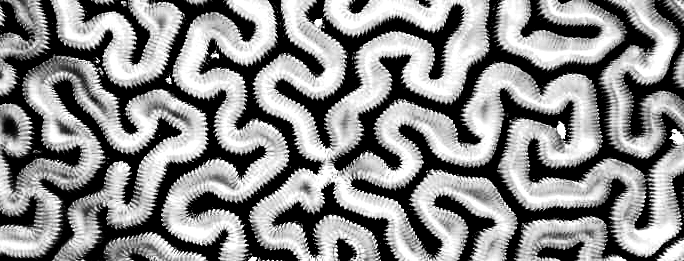Determinism
It's fairly well known that random numbers generated using a computer system are not truly random. There isn't a way to simply "generate" a random number from nothing, so most funtions that are designed to spit a random number out usually base it on something constantly changing, like the current time in miliseconds, and start from that number taken from when the function was ran. There might be functions that get applied to it afterward, or even layer it upon more random numbers, but the initial "randomness" doesn't exist. We can only approximate it based on other natural occurances that we deem as radnom, such as: what number the split second will be when you click on something.
By aiming a camera sensor, or other sensor, at a radioactive material, it's possible to detect stray alpha particles it emits when they come in contact with the sensor, and use their captured X,Y position data as input for generating a random number. This is introducing a natural aspect into the equation, but, what about being natural actually creates any sort of variation? Even basing the number of milliseonds again, the current time is just a result of counting pulses from a frequency generated from quartz. a rock. When applying a constant current to a crystal such as quartz, it will create a frequency we know. A number we can reliably predict.
By aiming a camera sensor, or other sensor, at a radioactive material, it's possible to detect stray alpha particles it emits and use their X,Y data captured on a sensor as input for generating a random number. This is introducing a natural aspect into the equation, but, what about being natural actually creates an sort of variation? Are natural occurances verifiably random if a computer program verifiably isn't?
Half-lives are measurable lengths. Each isotope has a verified range of time that it will most likely exist for until half of it decays. This is a set unchageable value. The randomness that's seen in nature is seen as random because it reflects the same randomness that we are able to produce. If I ask you to think of a random number between one and ten your answer could depend on any number of things. Millions upon billions of things you aren't consciously even thinking about. I wonder how many of these apects do we truly have any choice on, how much "choice" even exists, or if everything is just in response to whatever else is influencing it, like a set of dominos sprawling out from the center of the universe.
This may just come from thoughts of when I'm being pulling along through the system, and feel like I'm only operating how I "need" to to keep going, but if I'm just my inputs, than do I truly have any choice in anything? I could just be another collection of reactions that responds to its surroundings how it naturally does.
Origination of Variation
asdasdasdasdasdasd
Efficiency
asdasdasdasdasdasd
